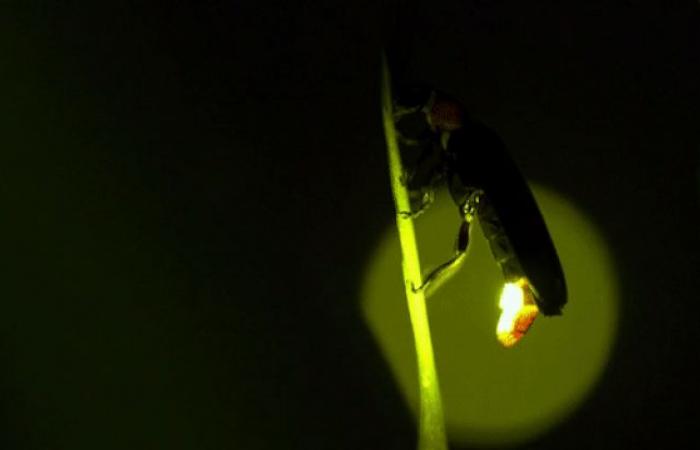It’s as mysterious as it is beautiful. For at least centuries, people around the world have wondered how these beetles coordinate their light dance. The explanations ranged from the wind exposing the glowing abdominal muscles to coincidence. A remarkable letter writer at science In 1917 he even suggested that it was an illusion created by the viewer’s own blinking.
Research since then has shown that synchronization is actually real. And mathematical models have shown how synchronicity in firefly flashes evolves over time. The mechanism by which this synchronization took place remained elusive, however.
“Is it something hard-wired in fireflies that gets them to sync?” Said physicist Raphaël Sarfati of the University of Colorado Boulder. “Or is it a little more contextual, maybe based on your environment?”
Now, a new study by Sarfarti has added the missing ingredient: three-dimensional space.
After recording a stereoscopic video of swarms of fireflies (Photinus carolinus) in the Great Smoky Mountains National Park in Tennessee, the research team reconstructed the blinking in three-dimensional space. And they found that there is no such thing as a strange innate firefly rhythm; Rather, the fireflies synchronize by copying the fireflies around them.
The data collection took place in June last year. Sarfati and his colleagues went to the national park, set up tents and two 360-degree cameras.
They recorded as much of the pairing display as they could. About 90 minutes a day, starting half an hour after sunset, they recorded the fireflies starting to glow, then flashing in a repeated pattern: a few brief flickers in a cluster, followed by a pause of a few seconds of more flickering. As the fireflies synchronize, the light seems to ripple across the terrain in waves.
The team also observed that the flock stayed within about two meters above the ground and that the shape of the flock closely matched the shape of the terrain – all the better for keeping an eye on the females staying closer to the ground.
When the team isolated individual beetles in the tents, things got interesting. They lost all sense of the rhythm that was playing outside. They flickered sporadically and were no longer in sync with the main swarm. It got even more interesting when a small number of fireflies were added to the tent. With up to 15 fireflies, the blinking was still erratic. But at higher numbers they started pulsing again together.
“When you start putting together 20 fireflies, watch what you see in the wild,” Sarfati said. “They have regular flashes and they are all synchronized.”
This suggests the synchronicity is social, the team said. The fireflies see what the other fireflies are doing in their immediate vicinity and respond in kind – resulting in a wave of light that resembles a stadium wave.
The why is still a mystery. There is a theory that synchronicity has developed because, because of the intervals of darkness, the males can find the weaker flash of the female beetles when responding to the indication – a kind of glowing call and response.
The mathematical modeling that emerges from this research will be a valuable tool for studying the lightning patterns of other species of fireflies. By finding out how it occurs and why it evolved, we can understand other cases of synchronicity in nature as well.
“This type of synchronicity occurs in many natural systems,” said Orit Peleg, a physicist at CU Boulder. “The cells in our hearts all bend and contract at the same time. The neurons in our brain also synchronize. ”
There can also be practical applications. Synchronization is critical to many technologies such as radio communications, GPS, and parallel computing. A growing field is swarm robotics, where a swarm of small robots can be synchronized to work together like insects and perform a task.
And knowing a bit more about these seemingly magical creatures could help protect them too.
“So many people have had positive experiences with fireflies,” said Sarfati.
“They are also very fragile. Many species are in decline worldwide because there is more and more light pollution. ”
The research was published in the Journal of the Royal Society Interface.
These were the details of the news Fireflies love to sync their blinking lights. Now we finally... for this day. We hope that we have succeeded by giving you the full details and information. To follow all our news, you can subscribe to the alerts system or to one of our different systems to provide you with all that is new.
It is also worth noting that the original news has been published and is available at de24.news and the editorial team at AlKhaleej Today has confirmed it and it has been modified, and it may have been completely transferred or quoted from it and you can read and follow this news from its main source.

